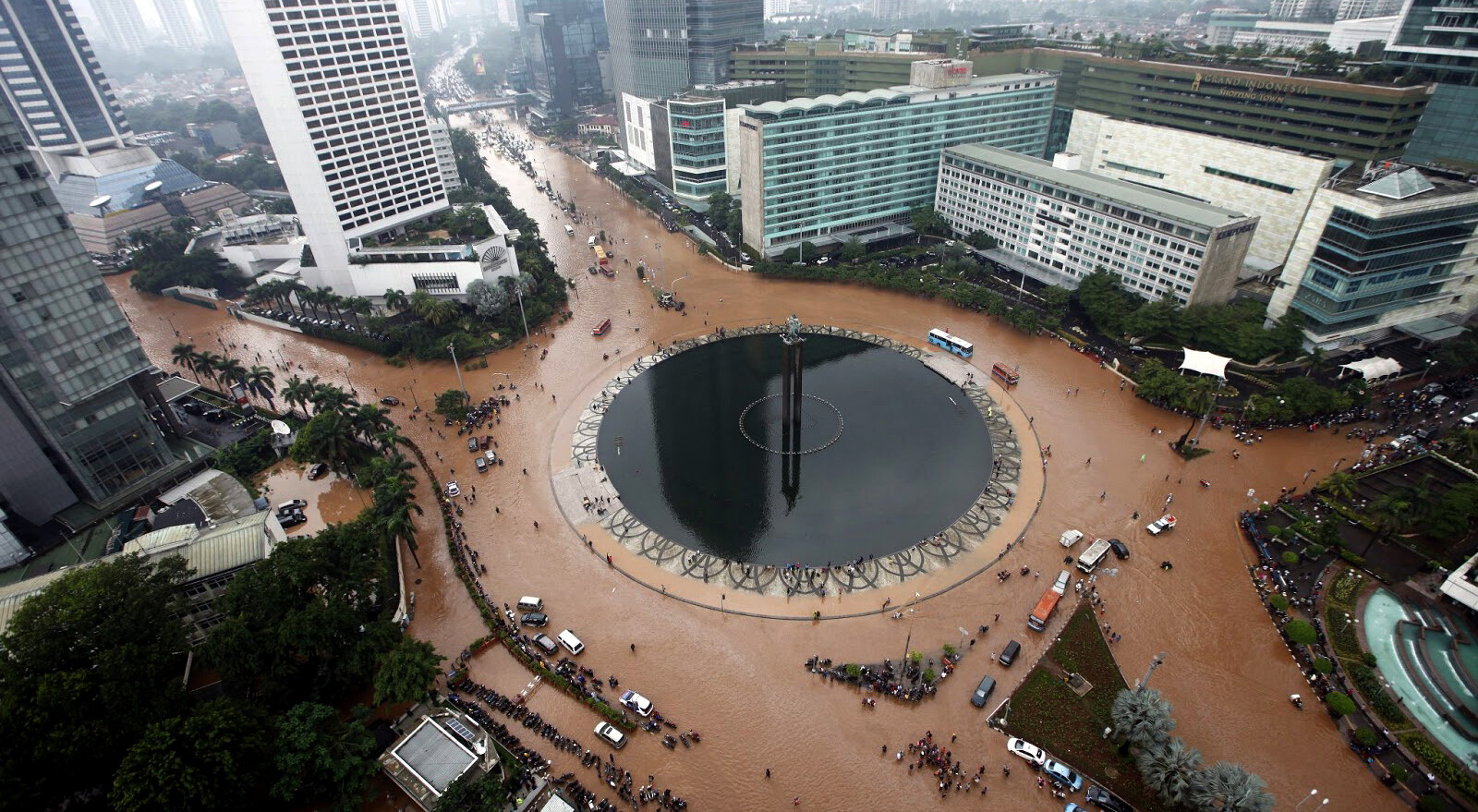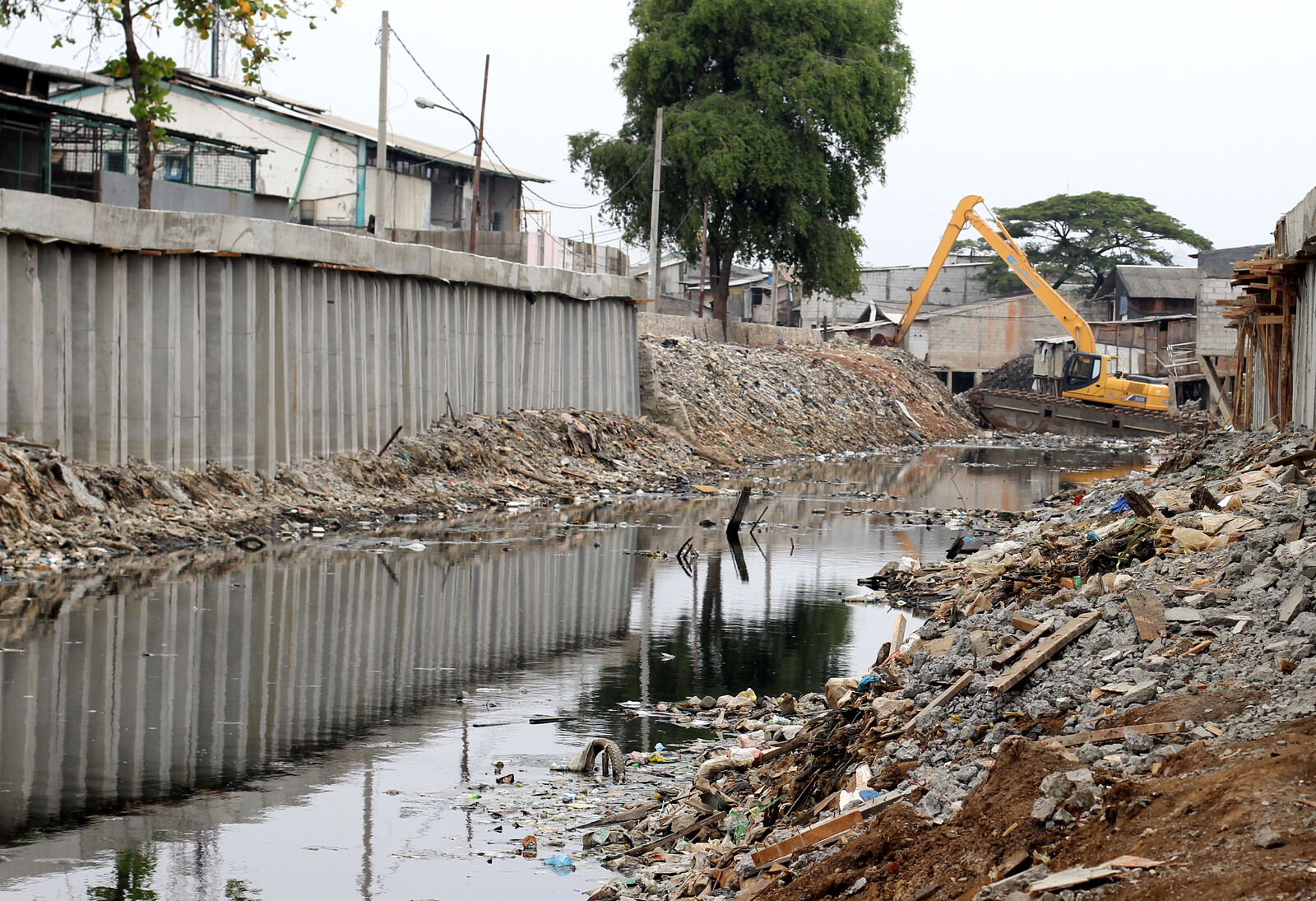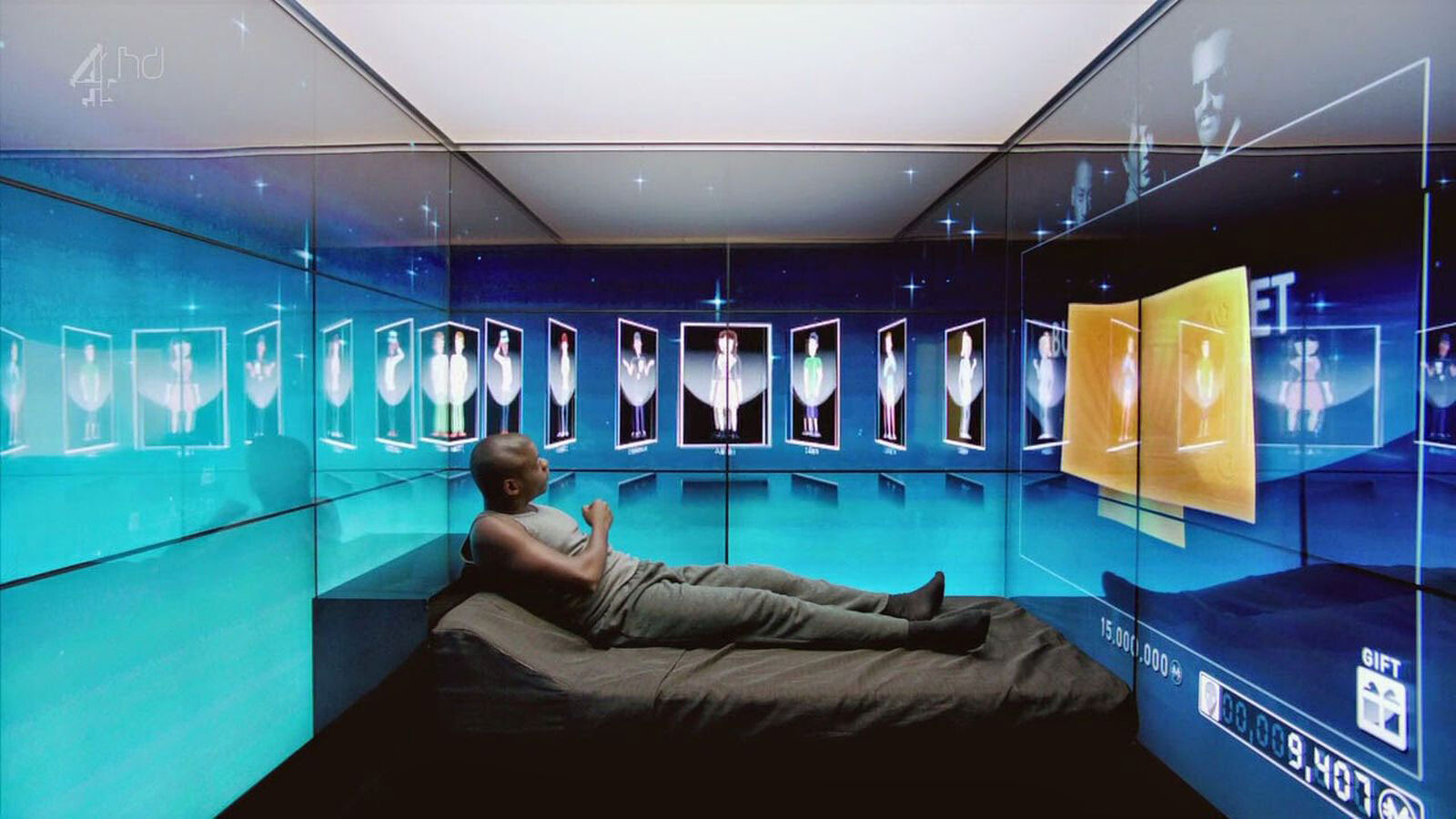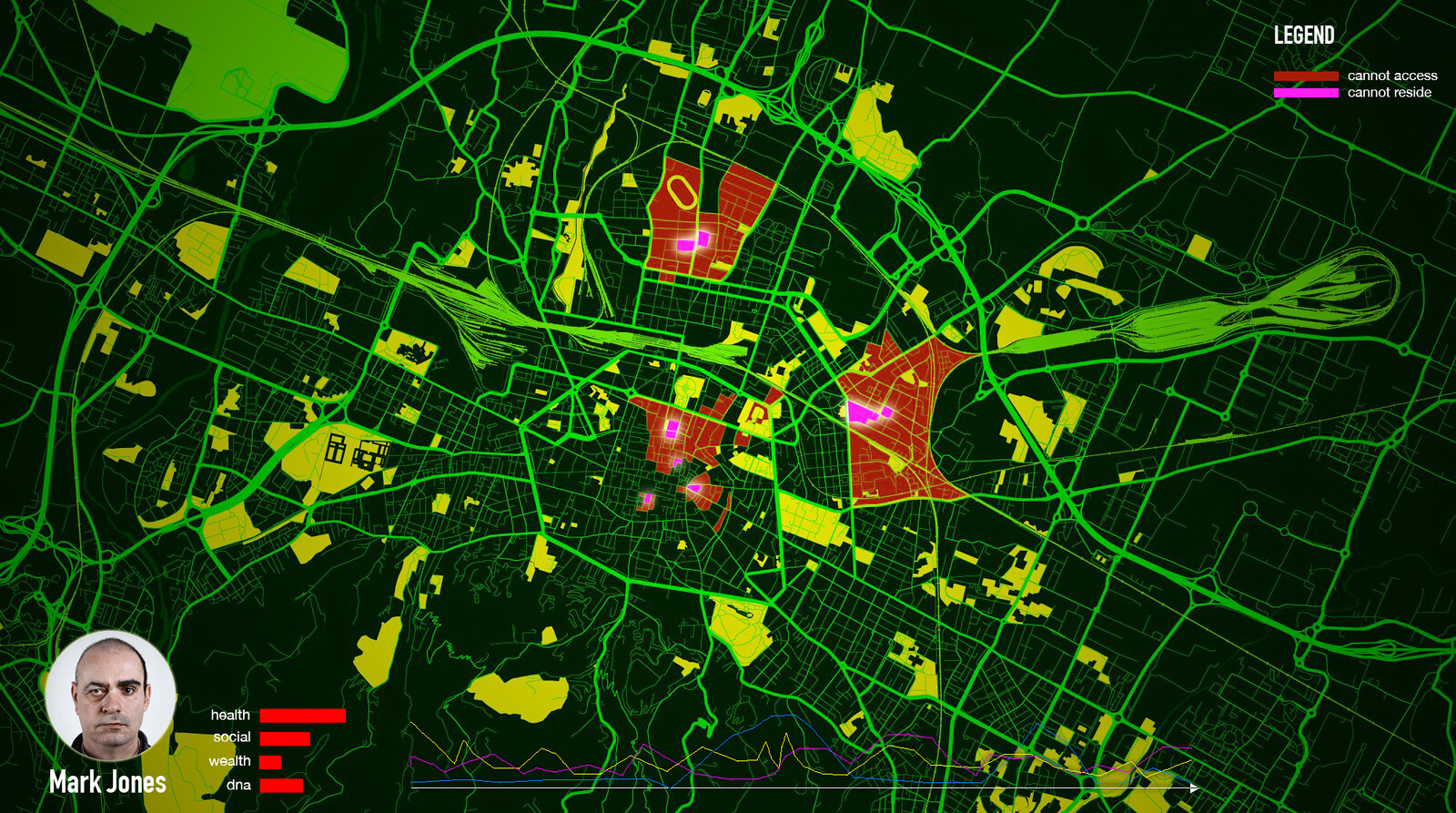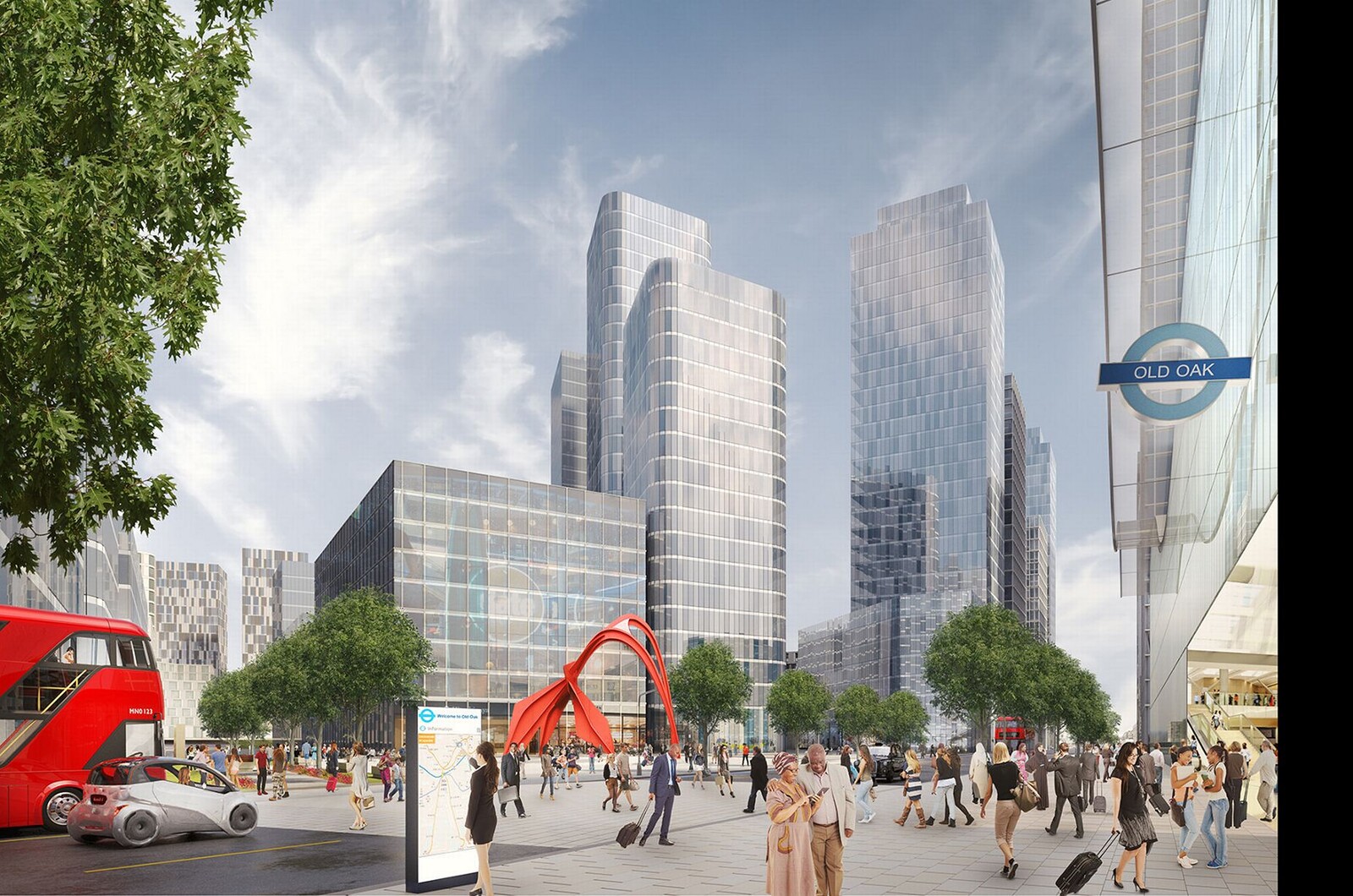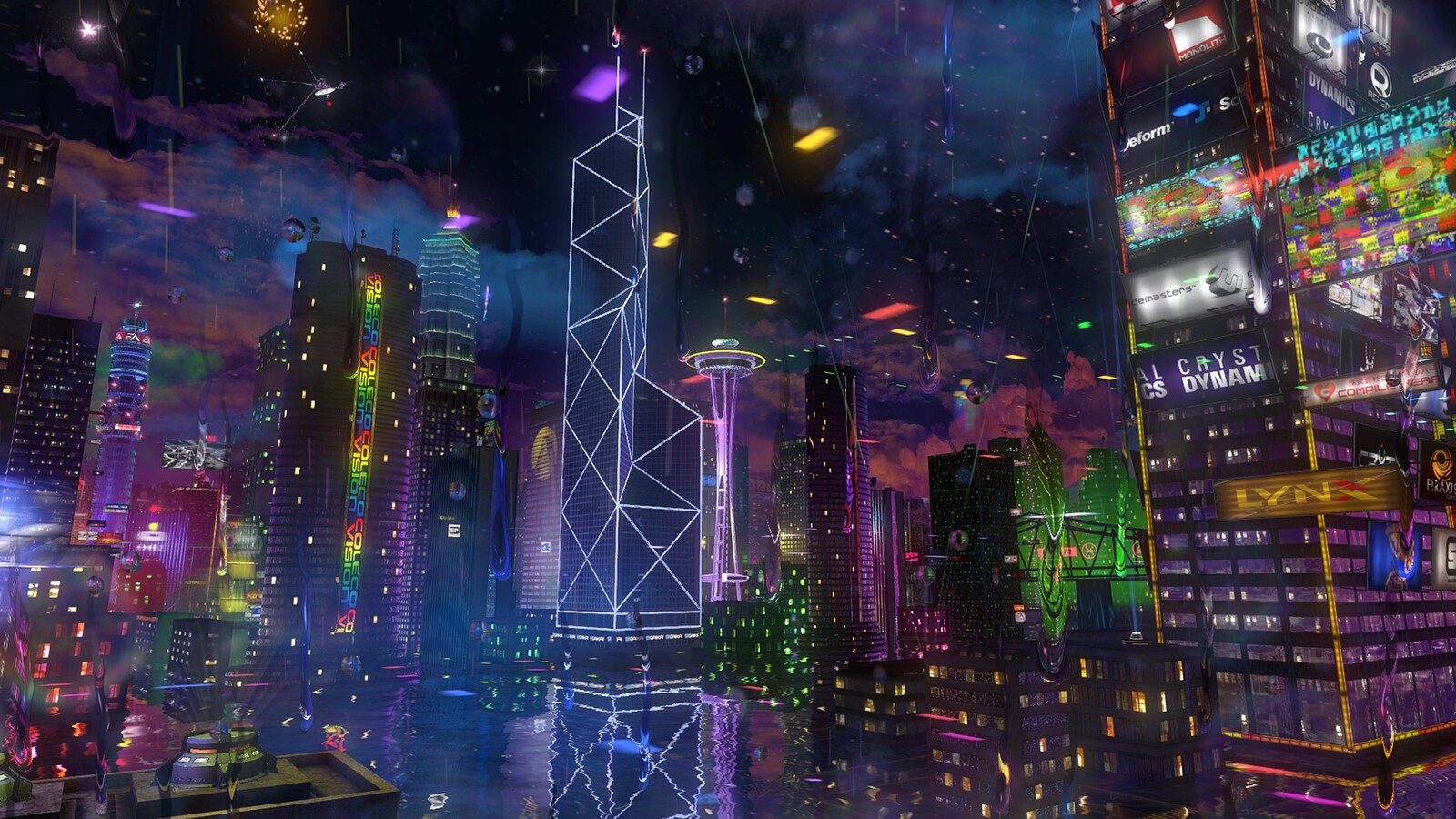New technologies foster efficiency and madness in the same flow.
— Félix Guattari1
The massive concentration of internet-connected mobile devices in urban environments have not only transformed methods for and possibilities of participation in city life but, by broadcasting deep into biological systems, have also fundamentally rewired the neural circuitries through which human inhabitants perceive and experience them. By providing on-demand access to vast repositories of information, the post-internet city necessarily restructures cognitive processes of attention, memory, and perception, allowing human minds to skitter through disjunctive virtual spaces seemingly instantaneously while perpetually feeding neural circuitries with torrential streams of intimately curated data. Intensified by variously expanded capacities for communication and information processing (especially server-side cloud computing) delivered by ubiquitous computational technologies (the supercomputers still quaintly referred to as mobile “phones”), the internet has fundamentally transformed our ways of knowing urban environments. Wayfinding is now less frequently guided by physical markers that once characterized the urban fabric than it is by GPS markers accessed through networked mobile interfaces; social and programmatic interactions and organizations in physical space are overlaid with the contingencies borne of virtual platforms; and the material exchanges of the city now exist predominantly (if not yet exclusively) as part of extended interfacial chains manipulated through digital networks. As the torrent of images flooding our electronic visual displays and the algorithms governing them influence where we go, where we gather, and how we navigate our cities, the interface becomes an urban force in its own right, shaping the city through its design of information and interaction. The interface frames how users interact with their mediated environments, and through this affective enframing, ensures that the transformation of the city occurs according to a particular logistic of inclusion and exclusion, always inclining users toward certain ends and discouraging others.2
To potentiate its capacity to shape urban processes, interface design invests in the precision work of pixel arrangements, sliders, clicks, and other skeuomorphic enticements, all the better to directly intersect with the cognitive processes responsible for activating intertwined virtual and physical networks. Indeed, interfacial reconstructions are especially evident in social media platforms due not least to the perpetual release of updated features to enhance and sustain user engagement. If architecture is understood as the collective interface that orients our access to the urban environment, how can the discipline of architecture (and, more broadly, a post-internet design practice) leverage the proliferation of screen-as-interface interactions to co-construct the city at various augmented scales? Among the heterogeneous, interlaced, networks of the post-internet city (biological, neural, material, virtual, etc.), how can this co-construction of the city more carefully attend to the microscales of pixels and neurons operating within the macroscales of planetary computation and social imaginations? As the organization of social, spatial, and programmatic relationships within the city’s networks of exchange, how can design leverage the augmented capacities of communication and cognition that are both simulated and stimulated by the post-internet city?
Considerations regarding the potent feedback loop between communication and thought certainly didn’t begin in the post-internet city; already in the late nineteenth century, German biologist Jakob von Uexkull was developing a theory of Umwelt to describe the semiotic world of the organism as it corresponds to relevant perceptual features in its surroundings.3 For von Uexkull, the organism perceives most acutely (and through whichever senses are most attuned for the task) the unique aspects of the environment pertinent to its survival and its capacity to act; multiple organisms sharing the same nominal environment are nevertheless considered to occupy singular umwelts that overlap in space and time but are sensed according to specific, individuated logics.4 In a biological cybernetic system, the mind interprets the sense-world of the organism, thereby shaping the organism’s interaction with the world, and subsequently reshaping the umwelt itself. Fundamentally, for von Uexkull, an organism’s capacity to participate in and effect its environment is governed preliminarily by the perceptions formed in its mind.
Returning to the umwelt of the post-internet city, home of billions of human residents, we might ask: how are digital media reshaping human perception? How does this communicative shift drive new communities of sensation, attention, and engagement?5 While all organisms respond in some way or another to ecological transformations in their surroundings, the mutation of the social and cultural landscape through a proliferation of digital modes of interaction begs the question of human adaptation.6 For millennia, the plasticity of the human brain has enabled adaptation alongside shifting environmental conditions. In hypermediated environments characterized by carefully calibrated sensory stimuli, the plasticity of the brain is not only exercised, it is capitalized. Competing agencies profit from the capacity to shape perceptions towards particular ends and benefit from the tendency of the brain to iteratively mold itself in response to shifting strategies of inculcation. In the global ecology of attention instantiated by the post-internet city, what should designers do with the brain—both theirs and ours?7
The New Impressionism
The brain does not have thinking as its function but that of hindering the thought from becoming lost in dream; it is the organ of attention to life.
— Henri Bergson8
For the past year, I have been investigating some of these questions as part of an interdisciplinary research team working on real-time megacity-scale visualizations of flooding in Jakarta, Indonesia. This applied research project, PetaBencana.id (Disaster Map Indonesia), gathers confirmed on-the-ground situational reports of emergency events on a web-based platform by engaging in AI-assisted conversations with residents through humanitarian chat bots over social media. The platform thus de-credentializes emergency reporting by making it possible for any resident with an internet connection to produce one. The platform also gathers, sorts, and displays relevant emergency data from local and government agencies, thereby helping to bridge critical information gaps between formalized structures of data collection and less formalized networks of situational epistemologies. Prior to the implementation of the platform, emergency management agencies disseminated flood information through static pdf reports, both making it nearly impossible to communicate time-critical information to thirty-one million urbanites and limiting capacities to gain information from residents. Inefficient communication mechanisms also created difficulties for agencies operating at various local and national levels to make coordinated, evidence-based decisions, resulting in amplified confusion, frictions between state and non-state actors, disjointed measures for emergency support and the misallocation of critical resources. As a transparent communication interface that provides free access to time critical information via a web based platform, PetaBencana.id not only supports evidence-based emergency response, but also helps to democratize decision support tools. The platform enables residents to strategize personal efforts for resilience as they actively check the map to avoid flooded areas, organize for the safety of their families, and minimize the loss of personal belongings, as well as to plan collaborative efforts through the coordination of resources within and between local communities and emergency agencies. For millions of residents, the platform thus enables safe navigation and situational awareness while also supporting emergency agencies to better respond to emergency needs and dynamic situations. While its interface display is intentionally simple—it must work as a design strategy, not look like a design—the platform was designed through complex processes of ethnographic research, co-research with social and technical partners, agencies, and supporters, as well as across and through various data flows and IT architectures. Because the platform has demonstrated a unique capacity to forge relationships among heterogeneous agents (and agencies) working toward various goals and governed by at times opposing objectives, as well as to facilitate the allocation of resources during emergency events and coordinate networks of interconnected populations and infrastructures, I have come to think of the platform as an augmented architecture of the city. If cities are the products of networks and systems of exchange, then the platform—designed by way of in-depth and ongoing ethnographic and design research studies—intervenes in the proliferation of screen-as-interface interactions to re-direct informational and material exchanges in the city. But when architecture operates at an interfacial threshold, its impression on the urban fabric is not established through a physical form; operating within the aesthetic paradigm of screen-as-interface and through the parameters of attention, the presence of this augmented architectural practice is necessarily instituted by the formation of impressions on the human mind through digital screens.
In contemporary cultures of immediacy, the ability to form actionable thoughts and thereby meaningfully participate in urban life depends on the mind’s ability to filter torrential flows of sense-data and selectively allocate neural circuitries of attention and memory to relevant stimuli. Scrolling through feeds of bottomless instantaneity, cognitive mechanisms adapt to multiplying visual and auditory impetuses by developing progressively fastidious mechanisms of attention. In a perpetual feedback mechanism, human minds adapt to the dynamic vicissitudes of virtual environments while digital spaces are simultaneously redesigned to heighten affect and sustain attention for the plastic human mind. Cognizant of the value that information can have in urban space when successfully distributed through planetary networks, social media platforms are not only transforming their interfaces to compete for attention, but are also developing metrics to measure attention itself. By quantifying user absorption, performance statistics enable these platforms to profit from the sale of advertising and marketing ventures which promise to capture and deliver the attention economy’s most valuable resource.
One example from PetaBencana.id is particularly telling, and it is worth developing here not only because it demonstrates what is at stake in the contemporary attention economy, but also because is suggests the substantial investment made in quantifying attention as a way of making legible the consequences of our consumption, whether for marketing, advertising, or other political programs. Twitter defines “Impressions” as the number of times a post is delivered to users. Comprehending the pertinence of the impression on our cityscapes necessitates an investigation of the influence that momentary attention has on the longer forming memories and perceptions that govern human capacities for urban action. Studies of visual presentation have shown that it takes approximately 13 milliseconds of exposure to an image for neural circuitries to continue processing visual input beyond the time of visibility.9 As the brain continues to process external stimuli beyond times of exposure, even involuntary attention is pivotal in the construction of longer forming memories. In adapting to manage torrential flows of data, the brain delegates its metabolic budget to optimize the information gained from brief glances. Research in transactive memory has further demonstrated that with a growing dependence on expanded informational fields such as external memory storage, cognitive processes of memory have adapted to retain less content-dense information and more about the locations where information can be accessed.10 Prioritizing momentary visibility over user engagement as an evaluation of impact and reach, the Twitter Impression suggests that in bottomless feeds of data, the delivery of information-laden content (engagement) is perhaps less critical than creating the minimum impression necessary to instigate an association between content and virtual address. Emergent research on the “resting-state” of the brain reveals that memories are now constructed during states of rest.11 Critically, these are “not memories of perceptions, but memories forming perceptions.”12 Leveraging the capacity of 13 milliseconds to form ensuing perceptions, the Impression targets urban intervention “not on the level which actions are decided but on the level at which the very capacity for action is forming.”13 As an architect designing in and for the attention economy, it becomes clear that intervening at the moment of an impression can be highly influential in recrafting our cityscapes because these perceptions project back onto and reconstruct both desire and urban space.
Even while Twitter’s stock continues to fluctuate, it is everywhere in evidence that digital platforms have become incredibly profitable and powerful. In less than twenty years, Alphabet’s Google went from a Stanford University research project (initiated in 1996 by now-Alphabet CEO Larry Page and Sergey Brin) to the world’s most valuable brand with an estimated worth of USD $109 billion. Facebook’s meteoric rise follows a similarly short story, even if the social media giant is increasingly the subject of scrutiny, not least for its for-profit manipulation of political elections. The attention paid by users on these platforms translates directly into the accumulation of capital by these platform owners; without the space here to develop a more complete political economy of attention (via platforms, interfaces, device design, and cloud computing, among other areas that would need to be considered), we can directly go on to a fundamental question of practice: can we reroute (i.e. design and re-design, as required) aspects of these platforms to create less exploitative, more creative and collaborative relationships among urban residents?
Importantly, these questions can’t be asked in a vacuum. As digital newsfeeds are barraged with continuous flows of information competing for cognitive attention and the race to accumulate impressions-as-capital goes on by way of our cognitive labor, the post-internet city’s growing appetite for material resources continues to explode. The escalating quantities of energy required to power the exchange of bits and bytes in the cloud also make urban inhabitants and infrastructures increasingly vulnerable to extreme weather events. If resilience is the capacity of a system to absorb and adapt to external pressures, and if plasticity engenders responsive capacities for adaptation, how might we—as designers—leverage the plastic potentials of the human brain to adapt in the interlaced biological, material, and virtual networks of the post-internet city?
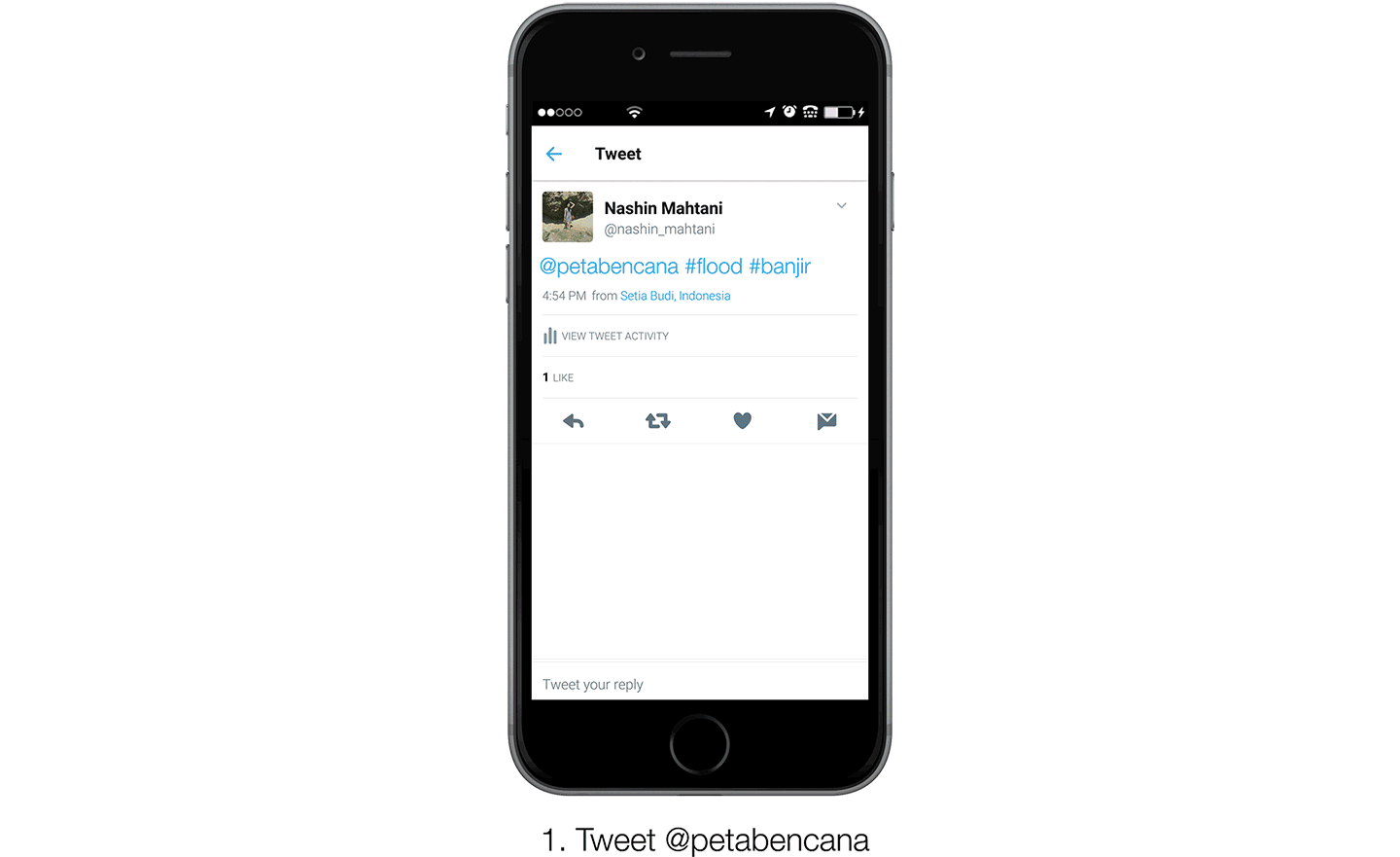

PetaBencana.id gathers confirmed on-the-ground situational reports by engaging in conversations with residents through humanitarian chat bots on social media. When the software detects a tweet with the keyword #flood (or #banjir) within a specified geographic area, PetaBencana bots send a programmatic response inviting users to participate in community flood-mapping. In the aesthetic paradigm of screen-as-interface, the ability to shift urban behavior through the interface hinges on the success of being able to capture user attention. The GIF embedded in PetaBencana.id’s programmatic invite plays a critical role in enrolling users to participate in and maintain this humanitarian infrastructure.
Selamat Jakarta, City of the Anthropocene
Cities, and especially megacities like Jakarta, Rio de Janeiro, or Shanghai, are now the most visible expression of human influence on the planet. The growth of cities is therefore a characteristic feature of the Anthropocene.
— Jan Zalasiewicz, Mark Williams, Alan Haywood, and Michael Ellis14
Our applied design research began in Jakarta, a megacity where the internet’s residual urban and neural shocks are amplified and extended into new intensive frontiers of both flight and capture.15 Jakarta can be understood as a city of the Anthropocene; it not only has one of the highest concentrations of digital and social media usage in the world, generating 2.4% of the world’s tweets annually, but the city of 31 million people is also situated on a coastal edge of the world’s most disaster prone region.16
Although Jakarta’s residents have lived with seasonal flooding since the seventeenth century, unpredictable weather patterns due to climate change have disrupted traditional patterns of knowledge that previously enabled residents to predict and prepare for the flood’s arrival. The return period of a 100-year flood in Jakarta is now less than five years. As the capital city attracts progressively larger developments, each extracting pervasive volumes of groundwater, the city is also sinking at a rate of three to ten centimeters annually. The northern edge of Jakarta is currently two meters below sea level, and the city depends on a complex network of pumps to drain water up and out to the Java sea. Competing infrastructural interventions to the already complex systems of hydraulic and hydrological infrastructures compound the difficulty of anticipating and preparing for the flood.
The interdependencies of complex infrastructural systems in Jakarta rendered themselves especially sensible in 2013, when the city experienced its most widespread occurrence of flooding. No predictive modeling could have anticipated the failure that triggered the city to declare a state of emergency; the collapse of a 30-meter portion of the West Gate Canal inundated even those districts typically unexposed to flooding. In a time of climate change, when overcapacity of physical infrastructures is the “new normal,” the externalities of planetary-scale computation have disrupted traditional ways of knowing and ways of living with the flood.17 However, the same technologies have fostered the emergence of alternate modalities of knowledge acquisition and dissemination. Leveraging the ways in which residents share information instantaneously thereby extends decision support to expanded networks in real time.
Strategies designed to capture attention and draw human minds into expending extended periods of time on virtual interfaces also foster expanded opportunities for information dissemination during emergency events. Although rapidly urbanizing megacities are often thought to be data scarce due to a lack of formal data, the supercomputers in our pockets—particularly in their abilities to integrate descriptive images and satellite coordinates into compressed, shareable formats—offer a wealth of information that can be leveraged for emergency support. Indonesia’s 85% mobile-phone penetration rate potentiates the activation of the screen-as-interface paradigm into a network of pre-installed, distributed, fluid sensory devices that can be integrated as dynamic components of humanitarian infrastructures. Over 70% of Indonesia’s internet users access the internet through mobile devices, and Jakarta’s residents actively embrace hand-held screens to share a variety of real-time information, including flooding. A Twitter #DataGrant, awarded to the pilot study, reveals the spatial and temporal coverage of social media activity in the city, recording over 150,000 geolocated Twitter conversations about flooding during the 2013/2014 monsoon season.
While conversations on social media occur over distributed networks, how might we amplify their agency by integrating the expanded capacities of communication and information processing that are fostered by ubiquitous computational technologies to verify, filter, and aggregate reports and capacitate decision support during emergency events? Critically, operating perhaps parasitically within the same networks, how might we repurpose cognitive capitalism’s investments in human brains to attune attention towards frameworks for democratizing decision support?
Our applied design research in Indonesia begins to demonstrate the potentialities of rerouting the interfaces designed to target consumer decisions at the level of cognition for humanitarian action. Our reporting mechanisms operate as follows: upon detecting Twitter conversations in a designated geographic area with the specific keywords “flood” or “banjir” (banjir means flood in the national language, Bahasa Indonesia), the PetaBencana bot sends a programmatic invitation asking users if they would like to contribute to community flood mapping. When a user responds to the invite, the software tweets a unique link to submit a flood report. The link guides users through four sequential inputs: verify their location, record flood heights, add photos, and add descriptions. Within milliseconds, users are able to view their contribution to the map. The architecture of the platform hacks into the ecologies of attention already instantiated and hosted by social media platforms, in order to aggregate verified situational overviews of the city.18 However, as a two-way transparent communication interface between residents and government agencies, PetaBencana.id’s significance is gained beyond technical arrangements; drawing creative lines of conjunction between the various formal and informal localized knowledges that exist within the city, the platform activates existing social networks into a productive infrastructural system. Leveraging the mobile interface as a tool for people to record and receive real-time observations of the city, the software repurposes the interfacial design of social media platforms and the proliferation of screen-as-interface to build expanded networks of collaborative resilience. In order to increase resilience and reach, the medium-agnostic platform is designed as an open framework with the capacity to plug into any social media source with an open API. (In Jakarta, residents also have the option of reporting through the instant messaging service Telegram and local applications Qlue and Pasang Mata.) Through engaging on-the-ground user verification with computational services in the cloud layer, the platform provides comprehensive overviews of disaster events in order to enhance urban situational knowledge and support navigation in the material infrastructures of the city layer.
In order to successfully repurpose the proliferation of the screen-as-interface into an augmented humanitarian infrastructure, the platform must necessarily operate at the interstices of virtual, material and neurological networks. Relying on the participation of resident users on social media to provide decision support for 50 million residents, the project hinges on the intermittent 13-millisecond pause between scrolls to encourage users to enroll into the community. In the competitive aesthetic paradigm of screen-as-interface, the platform’s significance is necessarily gained through the ways in which it expresses the possibilities of engagement (as well as the attendant affective satisfactions of engagement) for those who use it.19 Acting as a two-way interface between the interlaced virtual and material layers of a city, the platform must critically be designed to engage the neural networks that imagine, project onto, and reify these layers. Leveraging re-wired biological neural networks and expanded capacities for and methods of communication, how do we design engagement that invites users to both participate in and maintain this humanitarian infrastructure?
In digital media cultures of retweets, shares, likes, and follows, the capacity of the “invitation” tweet is not limited to enrolling single users into the community-sharing platform (even if the programmatic tweet itself is a direct response to a single user mention of flooding). As the invitation tweet appears in the streams of extended networks of user followers, and as its exposure is amplified further through retweets, the invitation has the potential to capture expanded fields of peripheral attention. While symptomologies of heightened distraction in the post-internet city easily warrant criticism, research suggests that ubiquitous techno-environments foster the formation of new “regimes” of attention.20 In these altered “regimes,” distraction is not inattention but rather a persistent peripheral attention that intentionally refuses to focus in order to make itself more receptive to possibly relevant peripheral stimuli.21 How might we leverage the ways in which augmented modes of attention search for “significant markers” in the digital umwelt, in order to repurpose the saturation of screen-exposure towards humanitarian ends? While PetaBencana.id’s invitation tweets initially embedded a minute-long explanatory video, the project now circulates a twenty-second meme in Graphics Interchange Format, or what is more commonly known as a GIF. The significance of this shift lies in the GIFs independence from active user engagement; unlike video links, GIFs play automatically on Twitter. Prioritizing momentary exposure over user initiative, GIFs therefore operate within the basic logic of impressions and reduce efforts needed for cognitive digestion. The increased likelihood of GIFs captivating peripheral attention is rooted in ancestral mechanisms of defense that necessitate peripheral attention to be especially sensitive to movement.22 As infinite loops of automated animated visual graphics, GIFs capitalize on instinctual sensitivities that have been further amplified by technological transformations. Leveraging augmented modes of attention fostered by the internet, PetaBencana.id employs GIFs as a means to tune the distributed attention of distracted minds into collective action for collaborative resilience.
If the built environment employs the manipulation of physical contrasts (e.g. surface, scale and light) to guide occupant movement through space, then in the architecture of the platform, GIFs hold an equivalent role in guiding user navigations through virtual networks. For PetaBencana.id, GIFs are critical, constituent components employed to capture neural circuitries traversing through informational fields; the flashing bytes vividly alert to significant markers in the digital umwelt. The cybernetics of interface design, especially as quantified through performance indicators on social media, offer unique mechanisms of feedback unprecedented in traditional forms of architecture. The reciprocal influences of human minds shaping the environments that shape their minds are rendered through interfacial design tangible and quantifiable, and consequently, rapidly adjustable in compressed time-frames.23 Augmenting biological cybernetics of the umwelt with soft cybernetics of interfacial design, the post-internet city fosters an experimental framework unprecedented to traditional forms of architecture, capacitating mechanisms that may enable human adaptation to keep pace with accelerated environmental transformations.
The Architecture of Interchangable Formats, or Post-Internet Design
I search therefore I scroll.
— Geraldine Juarez24Plasticity, in effect, is not flexibility. Let us not forget that plasticity is a mechanism for adapting while flexibility is a mechanism for submitting…To be conscious of the plasticity of one’s brain is to give oneself the means to say no.
— Marc Jeannerod25
The city is not simply composed of stone, steel, and glass; cities emerge from complex systems of social, economic, and cultural exchange. Cities have cityness.26 The internet, then, does not disrupt the role of architecture as the spatial organization of programmatic and social relationships within these exchanges, but augments the mechanisms by which the city is and has always been co-constructed. Even if wayfinding methods are now resolved to a flashing blue dot on a hand-held screen, architecture’s role as the primary mode of locating oneself in relation to the material, social, cultural, economic, and political exchanges of the city have not been displaced by the screen. The post-internet city simply displaces the form that architecture assumed. As the screen diverts attention away from the physical presence of traditional structures, that is, away from the materialized façade of urban settlement, it nevertheless invites architecture to operate by other means and among other registers. The capacity to affect action at a distance (yet one that is exceedingly intimate through neural networks) is enriched by networked technologies and the levels at which social media platforms intersect with the human mind to unveil interstices that influence urban behaviors for resilience. What possibilities lie in translating the skillsets of architecture, in its sensitivities to multi-dimensional contextual flows, into coordinating exchanges between intertwined virtual, material, and biological networks? The post-internet city provides potentials for architecture to manipulate the urban fabric at augmented scales and operate beyond material tools. Our expanded toolsets foster capacities to affect social and programmatic relationships in urban space by designing with the macro scales of planetary computation and at the microscales of flashing GIFs, pixels, bytes, and neurons.
Félix Guattari, “Towards a Post-Media Era,” in Provocative Alloys: A Post-Media Anthology, eds. Clemens Apprich, Josephine Berry Slater, Anthony Iles, and Oliver Lerone Schultz (Post Media Lab & Mute Books, 2013), 27.
Benjamin H. Bratton, The Stack: On Software and Sovereignty (Cambridge, MA: MIT Press, 2015), 39.
Jakob von Uexkull, A Foray into the Worlds of Animals and Humans (Minneapolis: University of Minnesota Press, 2010), 47.
Ibid., 47.
Meg McLagan and Yates McKee, eds., Sensible Politics: The Visual Culture of Nongovernmental Activism (New York: Zone, 2012).
Steven Quartz and Terance Sejnowski, “The Neural Basis of Cognitive Development”, in Cognitive Architecture: From Biopolitics to Noopolitics. Architecture & Mind in the Age of Communication and Information, eds. Deborah Haputmann and Warren Neidich (Rotterdam: 010 Publishers, 2010), 101.
Catherine Malabou, What Should We Do with Our Brain?, trans. Sebastian Rand (New York: Fordham University Press, 2008).
Henri Bergson, The Creative Mind (1941), trans. Mabelle L. Andison (New York: Carol Publishing, 1992), 74.
Mary C. Potter, Brad Wyble, Carl Erick Hagmann, and Emily S. McCourt, “Detecting meaning in RSVP at 13 ms per picture,” Attention, Perception, & Psychophysics 76, no. 2 (2014): 270; ➝.
Betsy Sparrow, Jenny Liu, and Daniel M.Wegner, “Google Effects on Memory: Cognitive Consequences of Having Information at our Fingertips,” Science 333, (2011): 778.
Felicity Callard and Daniel S. Margulies, “The Industrious Subject: Cognitive Neuroscience’s Reevaluation of Rest”, in Ibid., Hauptmann and Neidich, 328.
Deborah Hauptmann, “Introduction: Architecture and the Mind in the Age of Communication and Information,” in Ibid., Hauptmann and Neidich, 30.
Andrej Radman, “Figure, Discourse: To the Abstract Concretely,” in Ibid., Hauptmann and Neidich, 431.
Jan Zalasiewicz, Mark Williams, Alan Haywood, and Michael Ellis, “The Anthropocene: a new epoch of geological time?” Philosophical Transactions of The Royal Society: Mathematical Physical and Engineering Sciences 369, No.1938 (2011): 835-41; see also, Clive Hamilton, Christophe Bonneuil, and François Gemenne, eds., The Anthropocene and the Global Environmental Crisis: Rethinking Modernity in a New Epoch (London: Routledge, 2015).
Gilles Deleuze and Félix Guattari, A Thousand Plateaus: Capitalism and Schizophrenia, trans. Brian Massumi (Minneapolis: University of Minnesota Press, 1987).
On Jakarta as a city of the Anthropocene, see Jakarta: Architecture + Adaptation, eds. Etienne Turpin, Adam Bobbette, Meredith Miller (Jakarta: Universitas Indonesia Press, 2013) and David Chandler, “Securing the Anthropocene? International policy experiments in digital hacktivism: A case study of Jakarta,” Security Dialogue 48:2 (2017): 113-130; on tweet production in Jakarta, see Semiocast, “Twitter reaches half a billion accounts,” (2012) accessed 20 April 2015, ➝; on Jakarta’s proximity to disaster, see the United Nations Economic and Social Commission for Asia and the Pacific, Disasters in Asia and the Pacific: 2015 Year in Review (2015), ➝.
On the new normal, see Ibid., Bratton, 46.
The verification process through Twitter is based on the level of intent required to submit a flood report. Over the three years that the platform has been operational, there has not been a single incident of a false report.
See Ibid., Bratton.
Elie During, “Loose Coexistence: Technologies of Attention in the Age of the Post-Metropolis,” in Ibid., Hauptmann and Neidich, 267.
Ibid., 274.
William James, “Chapter XXIV: Instinct,” The Principles of Psychology (New York: Henry Holt & Co., 1890), ➝.
Bruce Wexler, “Shaping the Environments that Shape Our Brains: A Long Term Perspective,” in Ibid., Hauptmann and Neidich, 143.
Geraldine Juárez, “Intercolonial Technogalactic,” Reverse Hallucinations in the Archipelago, eds. Anna-Sophie Springer and Etienne Turpin (Berlin: K. Verlag & Haus der Kulturen der Welt, 2017), 155.
Marc Jeannerod, foreward to What Should We Do with Our Brain? by Catherine Malabou, trans. Sebastian Rand (New York: Fordham University Press, 2008), xiv.
AbdouMaliq Simone, Jakarta, Drawing the City Near (Minneapolis and London: University of Minnesota Press, 2014).
Post-Internet Cities is a collaborative project between e-flux Architecture and MAAT – Museum of Art, Architecture and Technology within the context of the Utopia/Dystopia exhibition and “Post-Internet Cities” conference, produced in association with Institute for Art History, Faculty of Social Sciences and Humanities – Universidade NOVA de Lisboa and Instituto Superior Técnico – Universidade de Lisboa, and supported by MIT Portugal Program and Millennium bcp Foundation.
Category
Subject
PetaBencana.id is an applied research project co-founded by Etienne Turpin and Tomas Holderness. CogniCity Open Source Software was developed by Matthew Berryman, Turpin, and Holderness. Special thanks to Turpin for his guidance, careful edits, and continued support for this research.
Post-Internet Cities is a collaborative project between e-flux Architecture and MAAT – Museum of Art, Architecture and Technology within the context of the Utopia/Dystopia exhibition and “Post-Internet Cities” conference, produced in association with Institute for Art History, Faculty of Social Sciences and Humanities – Universidade NOVA de Lisboa and Instituto Superior Técnico – Universidade de Lisboa, and supported by MIT Portugal Program and Millennium bcp Foundation.
